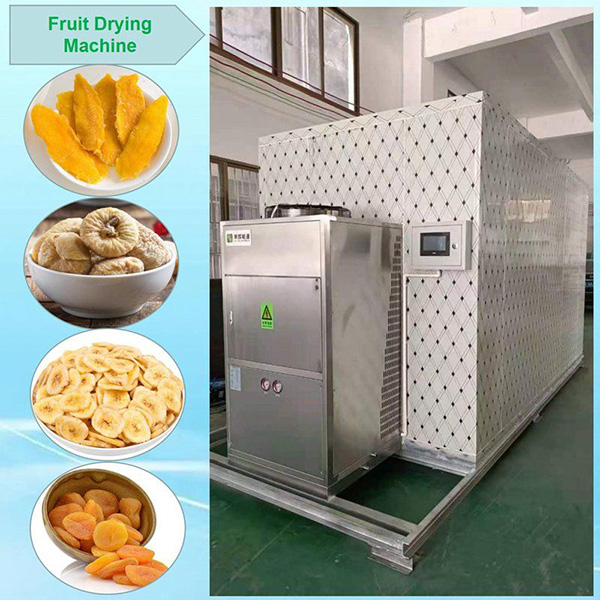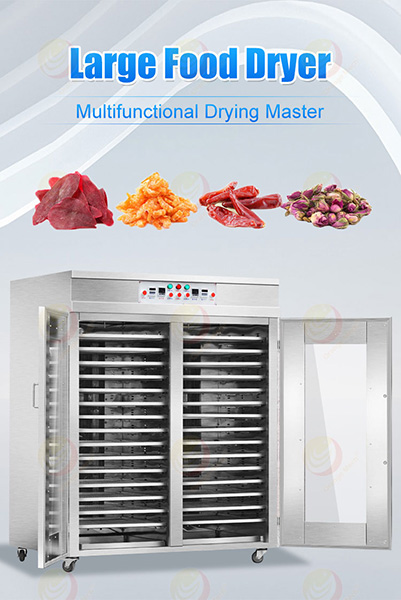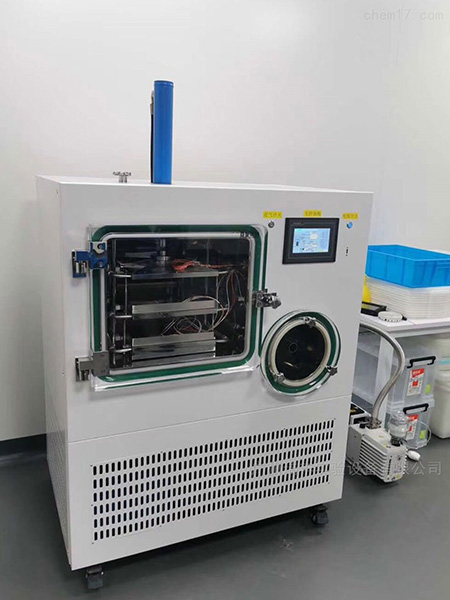
Content Menu
● Introduction to Food Drying Technology
● Understanding the Drying Machine for Food
● Types of Drying Machines for Food
>> 1. Electric Food Dehydrators
>> 2. Commercial Fruit Dehydrators
>> 3. Industrial Food Dryers
>> 4. Solar Food Dryers
● The Science Behind Food Drying
● Benefits of Using a Drying Machine for Food
>> 1. Extended Shelf Life
>> 2. Preservation of Nutrients
>> 3. Space-Saving Storage
>> 4. Cost-Effective
>> 5. Versatility
● Choosing the Right Drying Machine for Food
● Popular Foods to Dry
● Advanced Food Drying Technologies
>> 1. Freeze-Drying Technology
>> 2. Smart Food Drying Systems
>> 3. Microwave Vacuum Drying
● Energy-Efficient Food Dehydration
● The Future of Food Drying
● Conclusion
● Frequently Asked Questions
>> 1. What is the best temperature for drying food in a dehydrator?
>> 2. How long does it take to dry food in a dehydrator?
>> 3. Can I use a drying machine for food to make pet treats?
>> 4. Are solar food dryers effective in all climates?
>> 5. How do I clean and maintain my drying machine for food?
Introduction to Food Drying Technology
In today's fast-paced world, preserving food has become more important than ever. Among the various preservation methods available, food drying stands out as one of the most effective and time-tested techniques. At the heart of this process lies the drying machine for food, a versatile piece of equipment that has revolutionized how we preserve our favorite fruits, vegetables, meats, and more.
Understanding the Drying Machine for Food
A drying machine for food, also known as a food dehydrator, is an appliance designed to remove moisture from food items, thereby extending their shelf life while preserving their nutritional value and flavor. These machines come in various sizes and configurations, ranging from small countertop units for home use to large industrial food dryers capable of processing massive quantities of food.
The basic principle behind a drying machine for food is simple: it uses a combination of heat and air circulation to slowly remove moisture from food items. This process inhibits the growth of bacteria, yeasts, and molds, which are the primary causes of food spoilage.

Types of Drying Machines for Food
1. Electric Food Dehydrators
Electric food dehydrators are the most common type of drying machine for food used in homes and small-scale operations. These units typically consist of stackable trays, a heating element, and a fan to circulate air. They offer precise temperature control and are ideal for drying a wide variety of foods, from fruits and vegetables to herbs and meats.
2. Commercial Fruit Dehydrators
Commercial fruit dehydrators are larger, more powerful versions of their home counterparts. These machines are designed to handle larger quantities of produce and often feature multiple drying chambers, advanced temperature and humidity controls, and energy-efficient systems.
3. Industrial Food Dryers
Industrial food dryers are massive machines capable of processing tons of food per day. These systems are used in large-scale food manufacturing and often incorporate advanced technologies such as freeze-drying or spray drying. Industrial food dryers are essential for producing dried foods on a commercial scale, including instant soups, powdered milk, and dried fruits for cereals.
4. Solar Food Dryers
Solar food dryers harness the power of the sun to dry food naturally. While not as precise as electric models, solar dryers are eco-friendly and cost-effective, making them popular in regions with abundant sunlight. These dryers can be as simple as a box with a clear lid or as complex as large-scale solar tunnels used in agricultural settings.
The Science Behind Food Drying
The drying machine for food works by creating an environment that encourages evaporation. As warm air circulates around the food, it picks up moisture from the surface. This moisture-laden air is then either vented out of the machine or passed through a desiccant to remove the water before being recirculated.The key factors in effective food drying are:
1. Temperature: Most foods dry best between 95°F and 145°F (35°C to 63°C).
2. Airflow: Consistent air circulation ensures even drying and prevents moisture buildup.
3. Humidity: Lower humidity in the drying chamber accelerates the drying process.
4. Time: Drying times can range from a few hours to several days, depending on the food and desired result.

Benefits of Using a Drying Machine for Food
1. Extended Shelf Life
By removing moisture, a drying machine for food can extend the shelf life of many foods by months or even years. This makes it an excellent tool for reducing food waste and ensuring a stable food supply.
2. Preservation of Nutrients
Unlike some other preservation methods, drying food retains most of its original nutrients. Vitamins, minerals, and antioxidants are concentrated as the water is removed, resulting in nutrient-dense dried foods.
3. Space-Saving Storage
Dried foods take up significantly less space than their fresh counterparts, making them ideal for compact storage. This is particularly beneficial for those with limited pantry or freezer space.
4. Cost-Effective
While the initial investment in a drying machine for food may seem substantial, it can lead to significant savings over time. By allowing you to buy produce in bulk when it's in season and preserve it for later use, you can reduce your overall food expenses.
5. Versatility
A drying machine for food is incredibly versatile. It can be used to create healthy snacks, prepare ingredients for recipes, make pet treats, and even preserve flowers or herbs for crafts.
Choosing the Right Drying Machine for Food
When selecting a drying machine for food, consider the following factors:
1. Capacity: How much food do you plan to dry at once?
2. Size: Do you have space for a large unit, or do you need a compact model?
3. Features: Look for adjustable temperature controls, timer functions, and even distribution of heat.
4. Energy efficiency: Some models are designed to use less electricity, which can save money in the long run.
5. Noise level: If you plan to run your dehydrator overnight, a quieter model may be preferable.
6. Ease of cleaning: Removable, dishwasher-safe trays can make maintenance much simpler.
Popular Foods to Dry
A drying machine for food can be used to preserve a wide variety of foods:
1. Fruits: Apples, bananas, berries, mangoes, and more.
2. Vegetables: Tomatoes, carrots, peppers, onions, and leafy greens.
3. Herbs: Basil, oregano, thyme, and other culinary or medicinal herbs.
4. Meats: Beef jerky, turkey jerky, and fish.
5. Nuts and seeds: For making raw food snacks or extending shelf life.
Advanced Food Drying Technologies
As technology advances, so do the capabilities of drying machines for food. Some cutting-edge developments include:
1. Freeze-Drying Technology
Freeze-drying, also known as lyophilization, involves freezing the food and then removing the ice by sublimation. This process results in high-quality dried foods that retain their original shape, color, and most of their nutritional value. While traditionally used in pharmaceutical and high-end food production, freeze-drying technology is becoming more accessible for smaller-scale operations.
2. Smart Food Drying Systems
The integration of artificial intelligence and IoT (Internet of Things) technology has led to the development of smart food drying systems. These advanced drying machines for food can monitor and adjust drying parameters in real-time, ensuring optimal results and energy efficiency. Some systems even allow remote monitoring and control via smartphone apps.
3. Microwave Vacuum Drying
This innovative technique combines microwave heating with vacuum pressure to dry food quickly and efficiently. It's particularly effective for heat-sensitive foods and can result in high-quality dried products with excellent rehydration properties.
Energy-Efficient Food Dehydration
As sustainability becomes increasingly important, manufacturers are focusing on developing energy-efficient drying machines for food. Some strategies include:
1. Heat recovery systems that recycle warm air
2. Improved insulation to reduce heat loss
3. Variable speed fans that adjust airflow based on the drying stage
4. Solar-assisted hybrid systems that combine solar and electric heating
The Future of Food Drying
The future of food drying looks promising, with ongoing research and development in several areas:
1. Nanotechnology for improved food preservation
2. 3D-printed food dehydrators customized for specific products
3. Integration of artificial intelligence for optimized drying processes
4. Development of new drying methods for emerging alternative proteins
As these technologies evolve, we can expect to see even more efficient and versatile drying machines for food, capable of preserving a wider range of products while maintaining optimal nutritional value and flavor.

Conclusion
The drying machine for food has come a long way from its humble beginnings. Today, it stands as a testament to human ingenuity in food preservation. Whether you're a home cook looking to extend the life of your garden's bounty, a small business owner creating artisanal dried goods, or part of a large-scale food manufacturing operation, there's a drying machine for food that can meet your needs.
As we continue to face challenges in food security and sustainability, the importance of efficient food preservation methods cannot be overstated. The drying machine for food, in all its forms, will undoubtedly play a crucial role in shaping the future of food preservation, helping us reduce waste, conserve resources, and enjoy nutritious, flavorful foods year-round.
Frequently Asked Questions
1. What is the best temperature for drying food in a dehydrator?
Answer: The ideal temperature for drying food typically ranges between 95°F and 145°F (35°C to 63°C), depending on the type of food. Fruits and vegetables often dry best around 135°F (57°C), while meats for jerky should be dried at a higher temperature, usually 145°F (63°C), to ensure food safety.
2. How long does it take to dry food in a dehydrator?
Answer: Drying times can vary greatly depending on the food type, its water content, the dehydrator's efficiency, and the desired level of dryness. Generally, fruits can take 6-16 hours, vegetables 4-12 hours, and meats for jerky 4-15 hours. It's important to check your food periodically and follow specific recipes for best results.
3. Can I use a drying machine for food to make pet treats?
Answer: Yes, many pet owners use food dehydrators to make healthy, preservative-free treats for their pets. Popular options include dried sweet potato slices, dehydrated meat for dog jerky, and dried fish for cats. Always ensure the treats are appropriate for your pet's diet and consult with a veterinarian if you have any concerns.
4. Are solar food dryers effective in all climates?
Answer: Solar food dryers can be effective in many climates, but they work best in areas with consistent sunlight and low humidity. In cloudy or humid regions, drying times may be longer, and additional measures might be needed to prevent spoilage. Some solar dryers are designed with backup electric heating elements for use on cloudy days.
5. How do I clean and maintain my drying machine for food?
Answer: Proper cleaning and maintenance of your food dehydrator is crucial for food safety and longevity of the machine. Most units have removable trays that can be washed with warm, soapy water. The interior of the dehydrator should be wiped down with a damp cloth after each use. For thorough cleaning, consult your machine's manual, as some parts may be dishwasher safe. Regular maintenance includes checking the fan and heating element for dust buildup and ensuring all components are functioning correctly.












